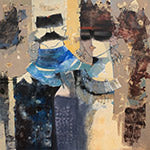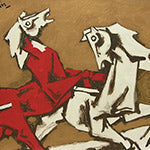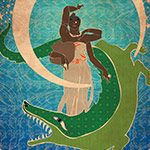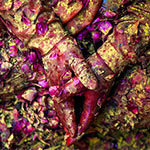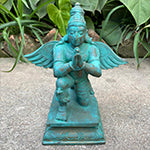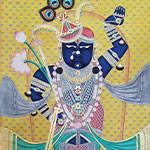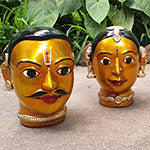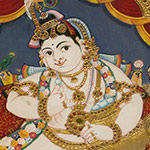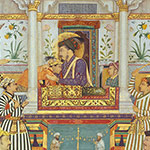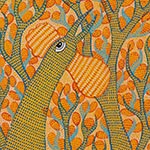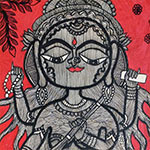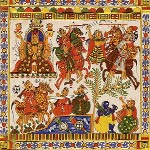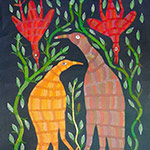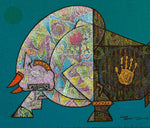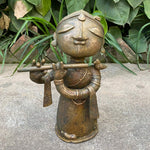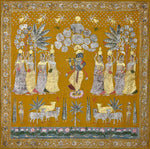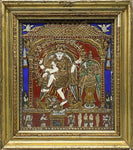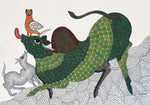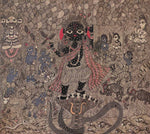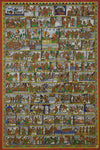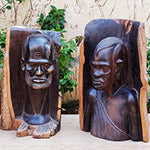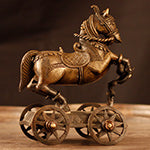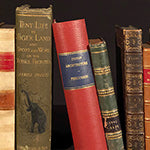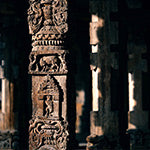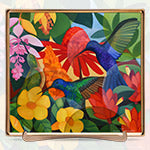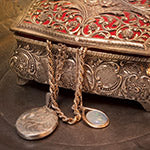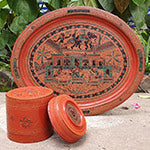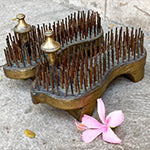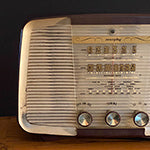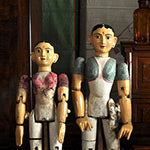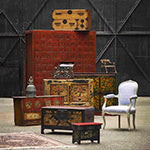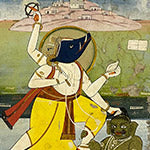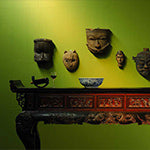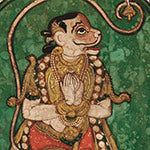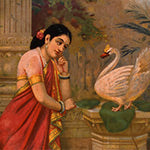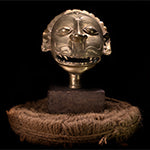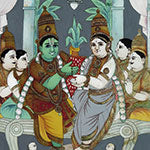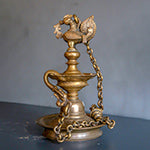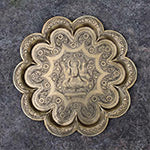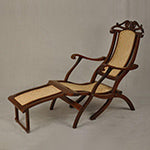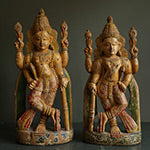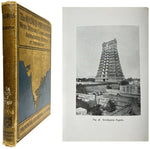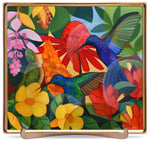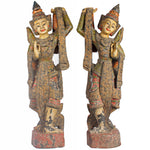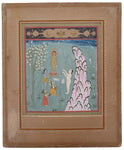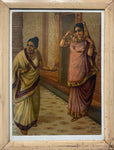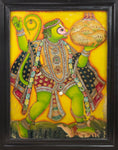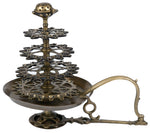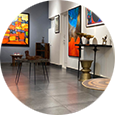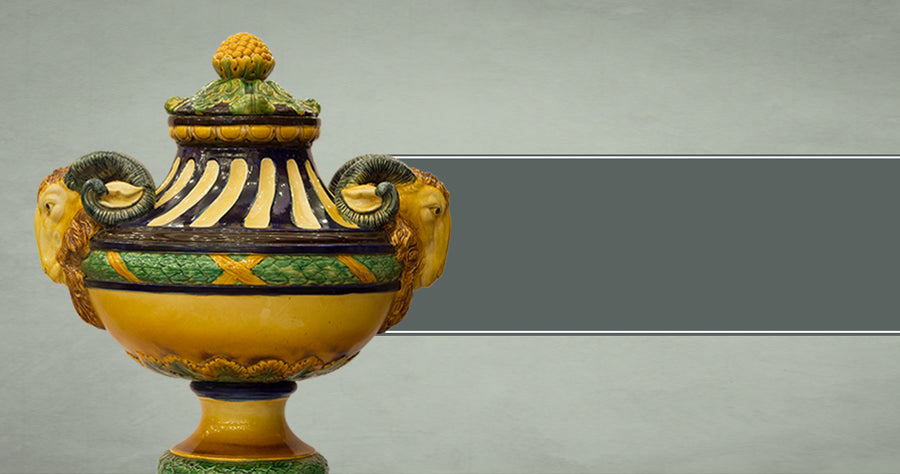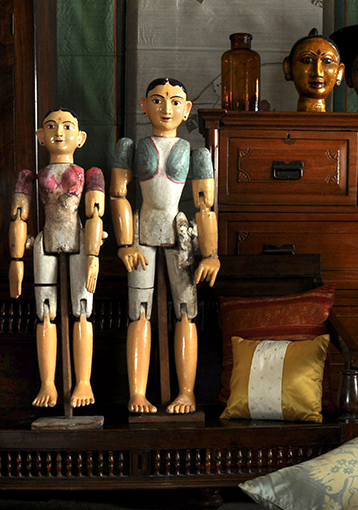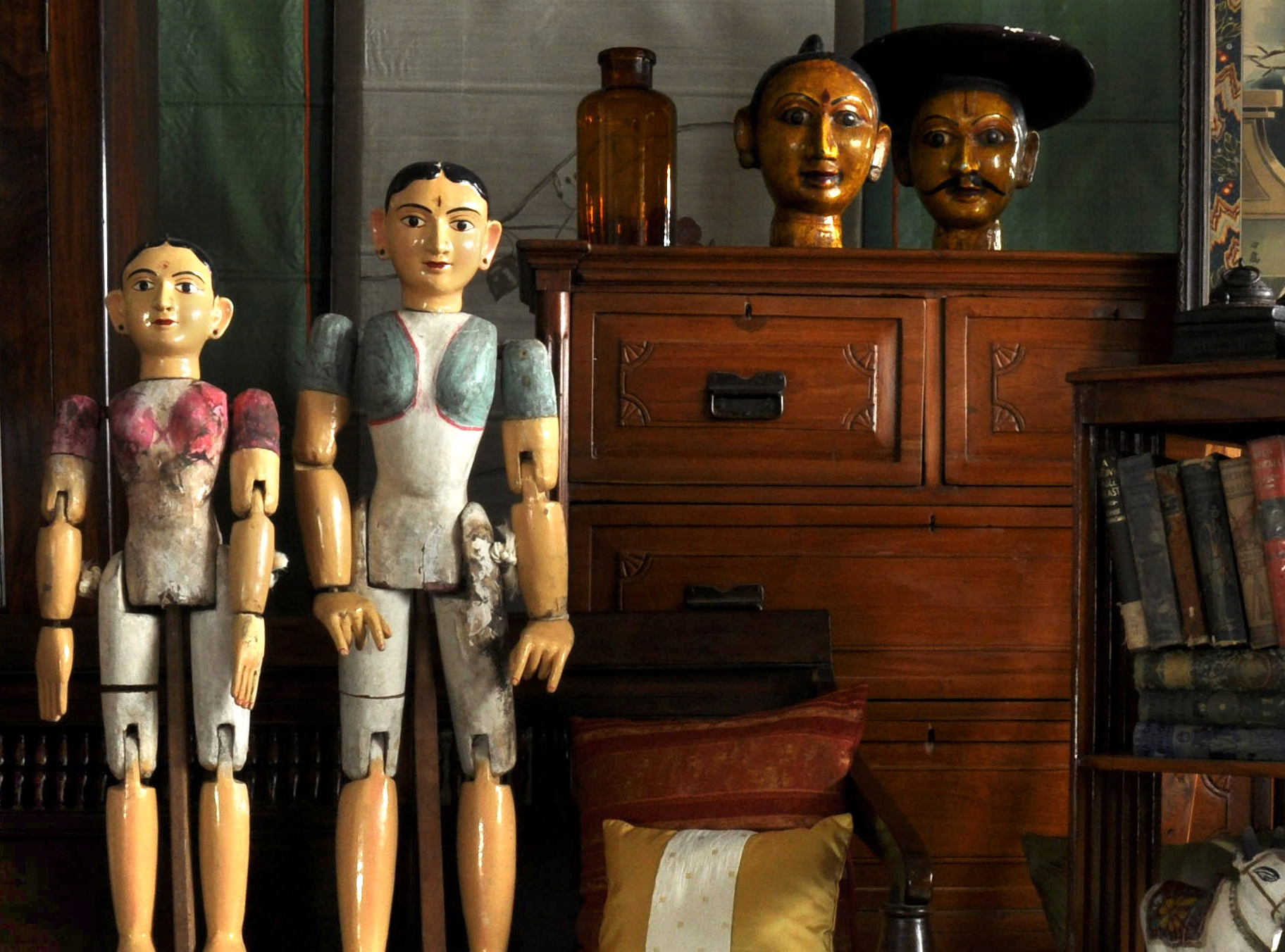Jangarh Singh Shyam: A Gond Art Legend and Symbol of the Struggle of Indigenous Artists
Creators And CollectorsOne of the largest and oldest tribes in India, the Gonds are well known for their vibrant artworks, through which they narrate intriguing stories. The flagbearer of Gond art and the figure behind the popularity that the art form enjoys today, Jangarh Singh Shyam is celebrated as the first Adivasi artist to gain widespread acclaim. Hailing from Patangarh, Madhya Pradesh, he propelled Gond art into international recognition and is credited with creating a new school of Indian contemporary art called the ‘Jangarh Kalam.’ One of the first Gond artists to use acrylic on paper and canvas, Jangarh’s incredible talent evoked great admiration and awe, his untimely passing leaving a gaping void in the world of Indian art.
 Jangarh Singh Shyam (Centre) with his wife Nankusia Bai (Left) and mentor J. Swaminathan (Right) at Bharat Bhavan, Bhopal, in 1987 (Photo credit: Jyoti Bhatt/Asia Art Archive/scroll.in)
Jangarh Singh Shyam (Centre) with his wife Nankusia Bai (Left) and mentor J. Swaminathan (Right) at Bharat Bhavan, Bhopal, in 1987 (Photo credit: Jyoti Bhatt/Asia Art Archive/scroll.in)
Murals that Grew into an Artform
Jangarh Singh Shyam was born in 1962, into a Pardhan Gond family in the village of Patangarh in Mandla district of Madhya Pradesh. Growing up in abject poverty, he was forced to quit school and try his hand at farming at a very young age. At the age of 16, he got married to Nankusia Bai from Sonpur village, who would later become his fellow artist. A few years later, still a teenager, Jangarh was “discovered” by acclaimed contemporary artist and his future mentor, Jagdish Swaminathan, while he was decorating the walls of huts in Patangarh with traditional motifs, which is a routine part of Gond culture. Impressed by the forms and colours in Jangarh’s art, Swaminathan took him to Bhopal to create murals in the Bharat Bhavan, a renowned multi-arts complex and museum. Thus, began a lifelong collaboration between the two.
 A mural by Jangarh at Bharat Bhavan, 1997 (Photo Credit: Charles Correa/scroll.in)
A mural by Jangarh at Bharat Bhavan, 1997 (Photo Credit: Charles Correa/scroll.in)
 Jangarh at work at Bharat Bhavan (Photo Credit: Wikimedia Commons)
Jangarh at work at Bharat Bhavan (Photo Credit: Wikimedia Commons)
Artworks Reverberating with Vibrant Culture
Under artist J. Swaminathan’s guidance, Jangarh learnt and grew as an artist, exploring and pushing the boundaries of what constituted Gond art until then. The Pardhan Gond clan, to which Jangarh belonged, are the minstrels of the Gond community. Like most Adivasi music, Pardhan music takes form in rhythmic vibrations and this reflected in Jangarh’s radiant artworks, made up of numerous intricate and luminous dots, dashes, squiggles and waves. The bright and unconventional colours and textures in Jangarh’s artworks were distinctive of his style, which came to be known as the ‘Jangarh Kalam.’ A mix of tribal and contemporary art, he created brilliantly textured, dynamic paintings of gods and goddesses, birds, animals and trees.
 An artwork depicting a snake by Jangarh (Photo Credit: scroll.in)
An artwork depicting a snake by Jangarh (Photo Credit: scroll.in)
Enchanting stories from the forests of Madhya Pradesh, along with the abundant flora and fauna, and mystical Gond folktales took visual form in Jangarh’s artworks. He also depicted Gond gods and goddesses like Bada Dev, the principal deity, Medi Ki Mata or the protector of the grains, Mashwasi Devi and even Raksa the Gond demon. The artist, who was deeply connected to his roots, used to fear that the gods and goddesses in his works would gain power and come after him, as he drew them.
 An artwork depicting a Gond goddess by Jangarh (Photo Credit: scroll.in)
An artwork depicting a Gond goddess by Jangarh (Photo Credit: scroll.in)
A Legacy Surviving Through a Clan
Jangarh Singh Shyam inspired and encouraged many of his immediate and extended family members to take up painting as their profession, recognising the latent talent that lay within them. Today, most practitioners of Gond art come from the Pardhan Gond clan. Jangarh is survived by his wife, Nankusia Bai, and children, Mayank Shyam and Japani Shyam, who are all renowned Gond artists themselves. The legacy of the ‘Jangarh Kalam’ is carried forth by many of Jangarh’s extended family members, and his house in Bhopal is abuzz with creative activity. These indigenous artists, with their undying love and flair for art, strive to keep Jangarh’s exceptional legacy and the artistic tradition of Gond art alive and thriving.
Numerous Awards and Accolades
In 1986, five years after his meeting Swaminathan, Jangarh Singh Shyam was conferred with the Shikhar Samman (the Summit Award), the highest civilian award from the Government of Madhya Pradesh. His artworks have been displayed all over the world, including in Bhopal, Delhi, Tokyo and New York. In 1989, Jangarh’s art was displayed in the Pompidou Centre’s Magiciens de la Terre (Magicians of Earth) exhibition in Paris – one of his most notable exhibitions. His work was also exhibited as part of ‘Other Masters’ curated by Jyotindra Jain at the Crafts Museum, New Delhi.
 A mural by Jangarh at the Magiciens de la Terre exhibition (Photo Credit: Deidi Von Schaewan/manoir-martigny.ch)
A mural by Jangarh at the Magiciens de la Terre exhibition (Photo Credit: Deidi Von Schaewan/manoir-martigny.ch)
The master of murals, Jangarh had painted the interiors of the Vidhan Bhavan, the Legislative Assembly of Madhya Pradesh, and the dome of the prestigious museum, Bharat Bhavan, Bhopal. A first and a landmark achievement for an Adivasi artist, Jangarh’s 1988 work ‘Landscape with Spider’ sold for $31,250 at Sotheby’s, New York, in 2010.
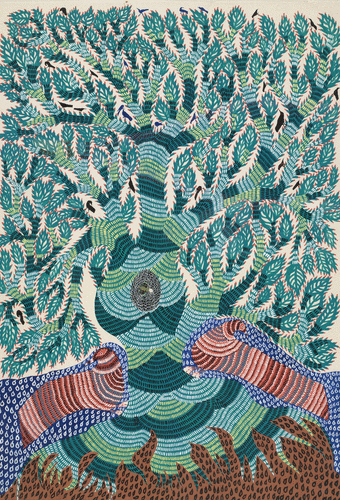 Landscape with Spider, 1988 (Photo Credit: Sotheby's)
Landscape with Spider, 1988 (Photo Credit: Sotheby's)
Struggles with Prejudice and Marginalisation
Art took Jangarh Singh Shyam far beyond his world of enchanted forests and mystical stories, and across the globe. But despite the popularity that he had garnered, Jangarh was forced to battle prejudice and marginalisation, like most other indigenous artists. There were never enough buyers for his artworks, and he lived with his family in a tin-roofed outhouse in Professors Colony, Bhopal. In a book titled ‘Jangarh Singh Shyam: The Enchanted Forest’ – a compilation of Jangarh’s artworks from art scholar and collector Mitchell Abdul Karim Crites’ collection, curated and authored by art historian Aurogeeta Das – Crites recalls a day Jangarh showed up at his house, insisting that he buy a certain number of paintings. Asked for the reason behind this, the artist softly explained that his buffalo had died and he needed the sum to buy a new one.
A Tragic, Untimely Passing
Jangarh committed suicide in July 2001, while at an art residency at the Mithila Museum in Japan, for reasons which still remain unclear. He was 39. According to news reports, the artist had been persuaded to take up the residency for a low monthly fee, and his stay at the museum was extended by three weeks without consent, which led to a bout of depression and ultimately, his death. In the letters that Jangarh wrote home, he spoke of loneliness.
 An artwork by Jangarh (Photo Credit: indulgexpress.com)
An artwork by Jangarh (Photo Credit: indulgexpress.com)
The Mithila Museum, which faced immense flak from Jangarh’s family and the Indian art community, wrote off any foul play in the artist’s death. The founder-director of the museum, Tokio Hasegawa, infamously declared that he had not “budgeted” for Jangarh’s remains to be sent to Bhopal, proposing cremation in Japan. But the body was eventually transported to Bhopal, where last rites were performed. Jangarh’s suicide called immediate attention to the struggle and widespread exploitation of indigenous artists and how they need to be protected, along with their artforms.
Jangarh’s passion and dedication towards art was well known. The young artist was elated to be a part of the contemporary art world and embraced its numerous opportunities, unarmed. “The first time I dipped my brush in bright poster colours in Bhopal, tremors went through my body,” he once said. Jangarh was regarded as a great artist by the stalwarts of Indian modern art like M.F. Husain, Gulam Mohammed Sheikh and Manjit Bawa. But not once, in life or death, did the brilliant Gond artist, in his quest for self-realisation and self-expression in the modern world, come to equal the great moderns’ price or repute.


